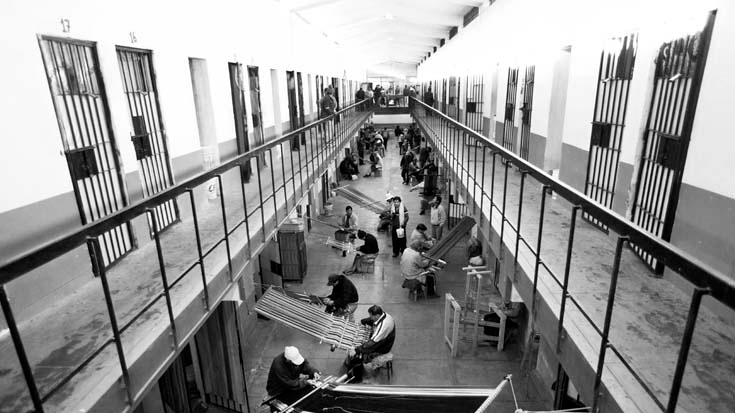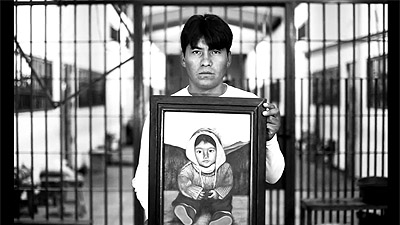Ever since he was sentenced to prison nearly four years ago, Daniel has never stopped thinking about his family or the year 2022, when he is scheduled for release. Time goes by slowly in the prison in Quencoro, Cusco, where the young man serves his sentence along with 1,900 other inmates.
But ever since he began making traditional textiles and selling them outside the prison, he has been able to provide for his wife and child and can continue to do so until the day he is released.
Thirty-year-old Daniel is one of thousands of inmates participating in the new reinsertion through employment programs. These programs seek to recover the true meaning of the word “rehabilitation” in one of the world’s most inefficient penitentiary systems.
Overcrowding, corruption, a lack of control and a high rate of repeat offenders are just a few of the serious problems in Latin American jails.
For example, occupancy rates in prisons in El Salvador are 334% (or three times over capacity) whereas in Bolivia this figure reaches 263%. Peru occupies third place in this ranking with an occupancy rate of 225%.
Just 45% of inmates have been sentenced. Many crimes in cities such as Lima, Bogota or Tegucigalpa are planned from within prisons and most inmates quickly return to jail after their release, making their reinsertion into society a resounding failure, according to experts.
There is a divide between the judicial and prison systems. Those who make the laws and those who impart justice do not take into account prison capacities, according to authorities.
“Prison benefits have been reduced and sentences have become stiffer; more inmates enter than leave and there has been little change in available space,” says Luis Pérez Guadalupe, president of Peru’s National Penitentiary Institute. “Besides,” he says, “a large share of the prison population is still waiting for a judge to decide definitively whether or not they are guilty.”


